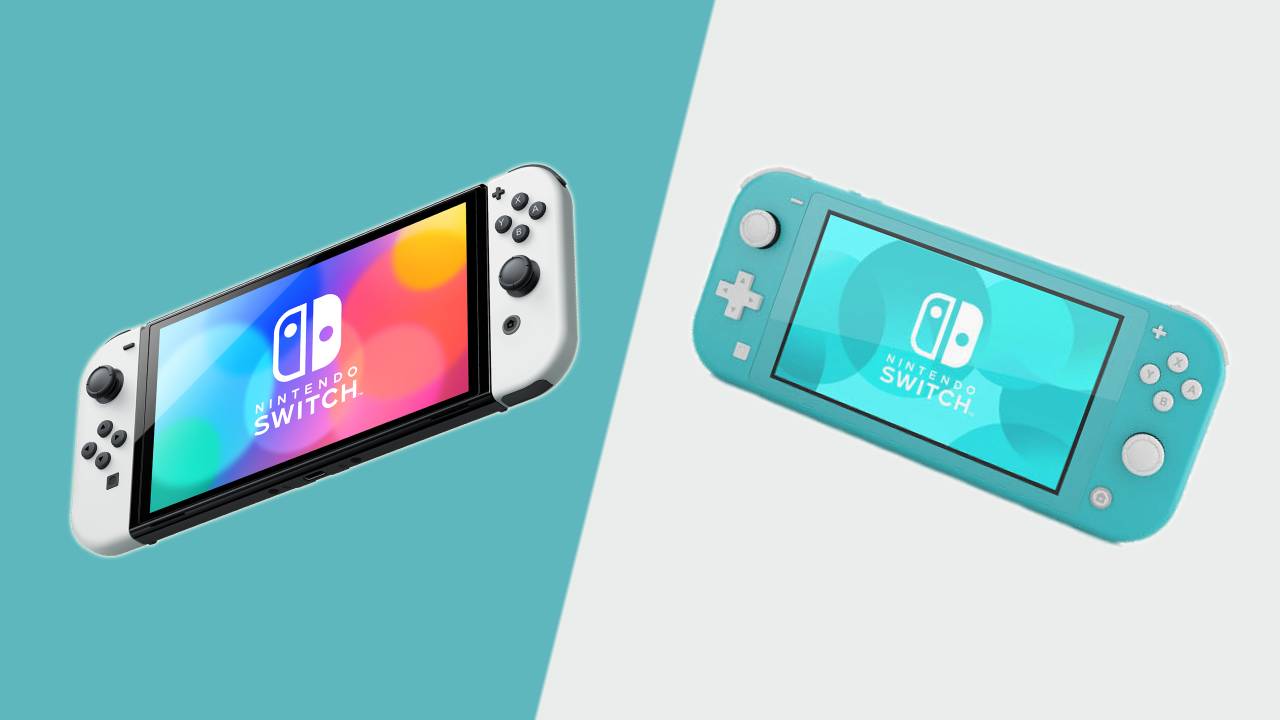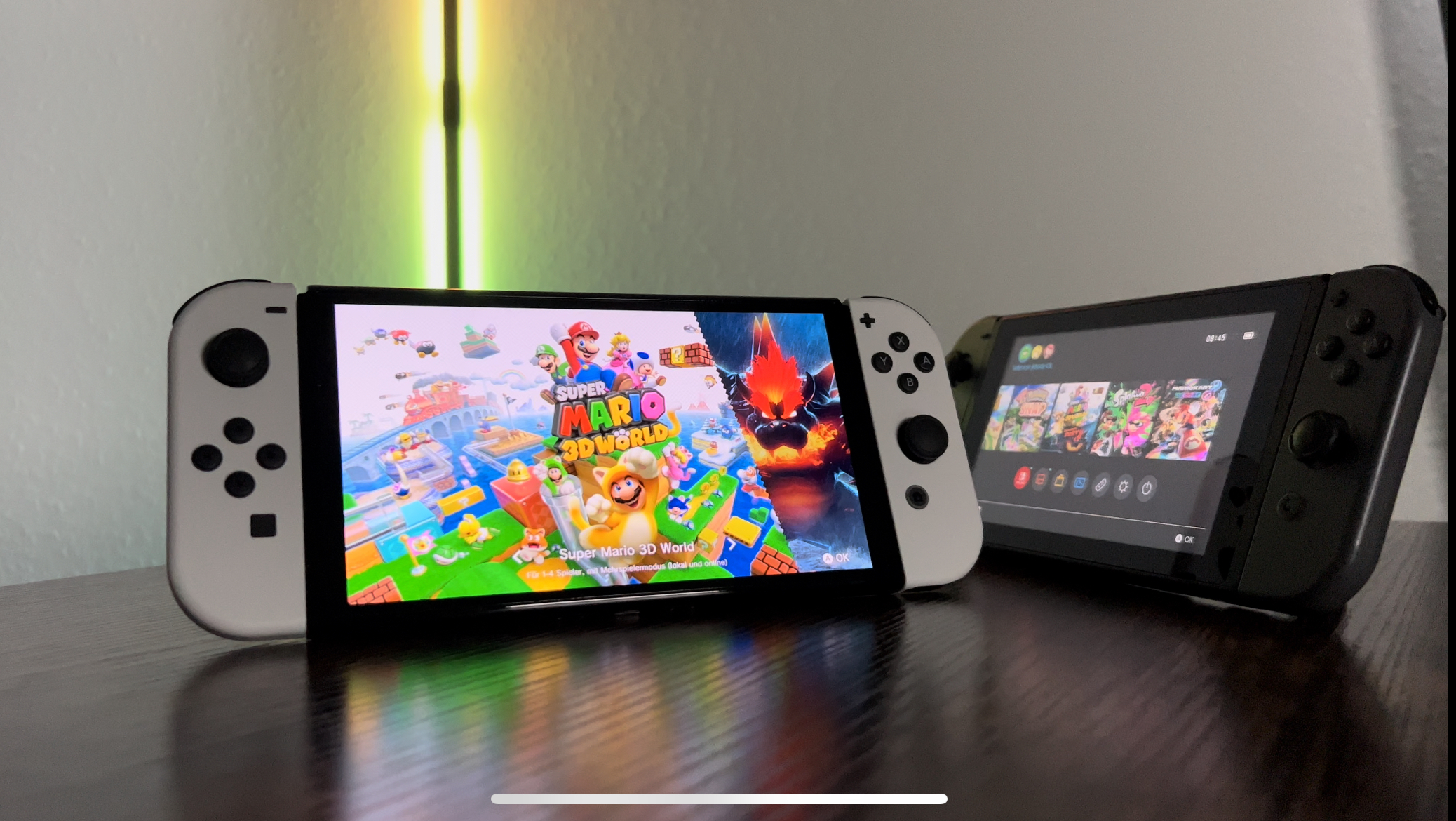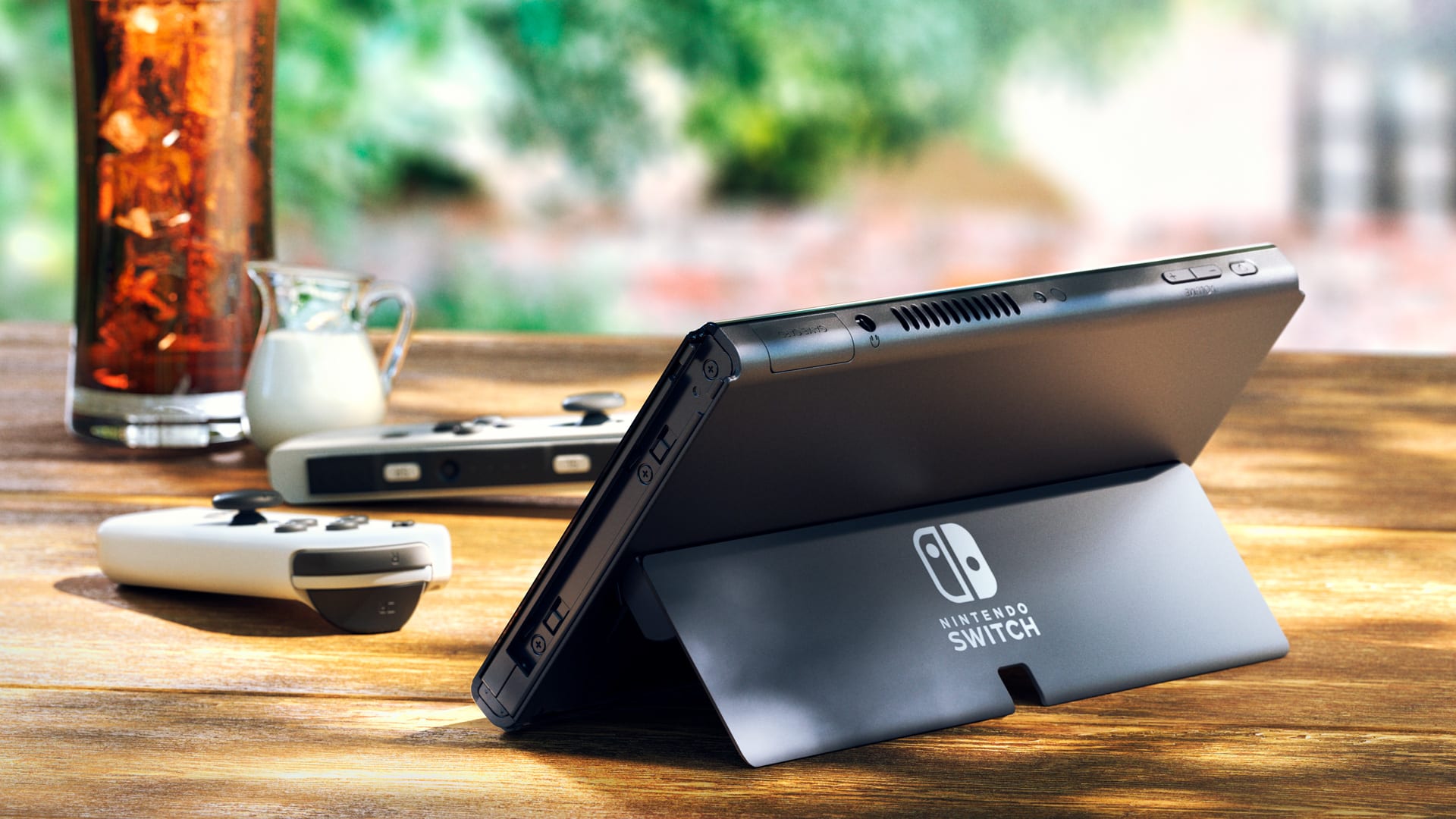Nintendo Switch OLED vs Nintendo Switch Lite: which Switch is right for you?
Should you pick the Switch OLED over the Switch Lite?

The Nintendo Switch OLED vs Nintendo Switch Lite conversation is worth delving into for those who are looking to buy a Switch console, but are unsure as to which model is right for them.
If you're looking to implement one of Nintendo's consoles to your setup, there's a lot more than just appearance to consider. While the Nintendo Switch OLED boasts the same hybrid capabilities as the standard Nintendo Switch console, the Nintendo Switch Lite is handheld-exclusive, which is perfect for gamers on the go but doesn't offer the same flexibility.
In addition, price is an important factor to consider when comparing the pair. The OLED is the most recent Nintendo Switch model, so its price tag reflects that, whereas the Nintendo Switch Lite comes up slightly cheaper. To make the buying decision slightly easier, we've compiled a guide to everything you need to know before making a purchase.
Nintendo Switch OLED vs Nintendo Switch Lite - price and release date

The Nintendo Switch OLED costs $349.99 / £309 / AU$539 and launched on October 8, 2021. It’s technically the fourth version of the Nintendo Switch console, as Nintendo refreshed the original model in 2019 with improved battery life and a more efficient CPU, alongside with the release of the Nintendo Switch Lite.
Speaking of the Switch Lite, Nintendo’s handheld-only model costs $199.99 / £199.99 / AU$329.95 and was released in 2019. This makes the Switch OLED model $150 more expensive than the Switch Lite, which is a hefty saving.
Nintendo Switch OLED vs Nintendo Switch Lite: design and features

The Nintendo Switch OLED looks almost identical to the original Switch console, with removable Joy-Con controllers, the same button layout, and the same Neon Blue and Red color scheme available – though it also has a classy White option. The biggest difference is the console’s punchy OLED screen, which is 7 inches compared to the original’s 6.2-inch display, with thinner bezels that give it a more modern look.
The Nintendo Switch OLED’s kickstand has also had an overhaul. It’s wider, more flexible, and lets you position the console at more angles during tabletop mode. The Switch OLED is equipped with better speakers, too, along with 64GB of internal storage – double the original. All of this while barely expanding the console's size and weight.
Get daily insight, inspiration and deals in your inbox
Sign up for breaking news, reviews, opinion, top tech deals, and more.
Those who pick up the Nintendo Switch OLED will get access to a nicer-looking dock than the original, which features rounded edges and a built-in ethernet port for providing a more solid connection when playing online. Here’s what’s inside the Nintendo Switch OLED:
- Size: 9.5 x 0.55 x 4 inches (w x d x h)
- Weight: Approximately 0.71 lbs / 0.93 lbs with Joy-Con controllers attached
- Screen: Multi-touch capacitive touch screen / 7-inch OLED screen
- Resolution: 1280 x 720 (720p)
- CPU/GPU: Nvidia Custom Tegra processor
- Storage: 64GB (can be expanded using microSDHC or microSDXC cards up to 2TB)
- Wireless: WI-Fi (802.11 a/b/g/n/ac compliant)
- Video output: Up to 1080p via HDMI in TV mode, 720p in handheld mode
- Audio output: 5.1 Linear PCM
- Speakers: Stereo
- USB connector: USB Type-C for charging
- 3.5mm headphone jack
- Battery life: approximately 4.5-9 hours
- Charging time: approximately 3 hours
The Nintendo Switch Lite is a different proposition. It forgoes the Switch OLED’s hybrid Joy Con-detaching nature in favor of being a handheld-only device, which gives it the enviable perk of being the only Switch with a dedicated D-Pad. You can’t display games on a TV, though, nor can you pop off the Joy-Cons.
Its portable focus means it’s smaller in size, with a 5.5-inch display, which is 1.5-inches shorter than the Switch OLED. There’s a wider selection of case colors to choose from over the new Switch as well, including Gray, Turquoise, Yellow, Coral and Blue.
From a technical perspective, the Switch Lite matches the Nintendo Switch OLED. However, it doesn’t have as impressive battery life – averaging three to seven hours as opposed to 4.5 to 9 hours.
Here’s what’s inside the Nintendo Switch Lite:
- Size: 8.2 x 0.55 x 3.6 inches (w x d x h)
- Weight: Approximately 0.61 lbs
- Screen: Multi-touch capacitive touch screen / 5.5-inch LCD screen
- Resolution: 1280 x 720 (720p)
- CPU/GPU: Nvidia Custom Tegra processor
- Storage: 32GB (can be expanded using microSDHC or microSDXC cards up to 2TB)
- Wireless: Wi-Fi (802.11 a/b/g/n/ac compliant)
- Speakers: Stereo
- USB connector: USB Type-C for charging
- 3.5mm headphone jack
- Battery life: approximately 3-7 hours
- Charging time: approximately 3 hours
Nintendo Switch OLED vs Nintendo Switch Lite - games

The good news is that the Switch OLED and Switch Lite can play all the best Nintendo Switch games available. Nintendo has noted that experiences with the Toy-Con accessories from the Nintendo Labo series may differ due to the Switch OLED’s larger screen, but that seems to be the only issue.
It’s important to note that the Nintendo Switch Lite won’t let you experience games on the big screen, though, as it's strictly a handheld-only device. You can’t detach the Joy-Con for some multiplayer fun or use motion controls, either, and its LCD screen won’t look as pleasing to the eye as the new OLED display. However, the Switch Lite is considerably cheaper and still a great way to play the latest Switch games.
Another area where the Nintendo Switch OLED has a clear-cut advantage over the Nintendo Switch Lite when it comes to games is that it has 64GB of internal storage as opposed to 32GB. That means you'll have more room to play if you like to download your games digitally from the Nintendo Switch eShop.
That being said, you can expand the storage of both Switch consoles thanks to the microSD card slot, which supports up to 2TB compatible cards. These tend to go for cheap, particularly during events like Amazon Prime Day and Black Friday, so it’s a negligible difference.
Nintendo Switch OLED vs Nintendo Switch Lite - verdict

Nintendo’s updated Switch OLED model will undoubtedly appeal to newcomers who want the best Switch experience available. But the Nintendo Switch Lite is still a compelling proposition due to its cheaper price point and more portable form factor.
While you can’t go wrong with either model, the Switch OLED provides more flexibility, as you can play on the go or on the TV when docked. However, it won’t look any different than the original Switch when playing on the big screen, as Nintendo opted against a 4K output. Where it does shine, though, is in handheld mode, thanks to its vibrant and bigger OLED display.
The choice between the two consoles will tend to come down to how you expect to use your Switch. If you can’t picture yourself playing any other way than handheld mode and want a more compact form factor, the Nintendo Switch Lite may be the way to go. If you want to enjoy everything the Switch offers, including TV mode, handheld and tabletop mode, we recommend the pricier Nintendo Switch OLED.
If you've just purchased a Nintendo Switch console, consider checking out our guides to the best Nintendo Switch games and best Nintendo Switch accessories to upgrade your handheld experience even further.
Adam was formerly TRG's Hardware Editor. A law graduate with an exceptional track record in content creation and online engagement, Adam has penned scintillating copy for various technology sites and also established his very own award-nominated video games website. He’s previously worked at Nintendo of Europe as a Content Marketing Editor and once played Halo 5: Guardians for over 51 hours for charity. He is now an editor at The Shortcut.
- Dashiell WoodHardware Writer
- Rhys WoodHardware Editor
- Kara PhillipsEvergreen Writer
